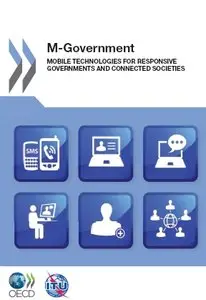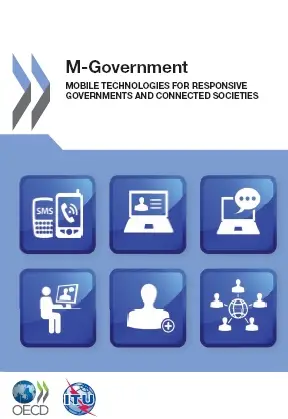M-Government: Mobile Technologies for Responsive Governments and Connected Societies
OECD, International Telecommunication Union | 16 Sep 2011 | ISBN: 9264118691 9789264118690 9789264118706 | 154 pages | PDF | 2 MB
OECD, International Telecommunication Union | 16 Sep 2011 | ISBN: 9264118691 9789264118690 9789264118706 | 154 pages | PDF | 2 MB
This report aims to foster a better understanding on how to leverage the economic and social impacts of the implementation of the Internet into mobile devices to enable ubiquitous governments, sustain public sector innovation and transform public service delivery.
The content of this report paves the way for the Report on Agile Government to be released by OECD in the Fall of 2011.
The report is a joint-product of the collaboration of OECD with the International Telecommunication Union (ITU) and the United Nations Department of Economic and Social Affairs.
Table of contents
Executive summary
Chapter 1. Towards the next generation of public services
From e-government to m-government
Growth of mobile technologies
Underlying concepts and motivational factors
Policy formulation and priority setting
Bibliography
Chapter 2. Benefits and outcomes of m-government
Expanding governments’ capacity
Transformational stages of e-government
G2C applications and services
G2G applications and services
G2B applications and services
G2E applications and services
M-Government – Benefits for governments
M-Government – Benefits for citizens
M-Government – Benefits for businesses and economic growth
Bibliography
Chapter 3. Understanding m-government adoption
The inherent value of m-government
Adoption factors
Mobile value chain
Key players and stakeholders across the value chain
Stakeholders’ partnerships and collaboration
Bibliography
Chapter 4. Prerequisites for agility and ubiquity
Evolving public service delivery
Deployment and feasibility
Changes in user acceptance and cultural adaption
Key barriers and challenges
Bibliography
Chapter 5. Technology options for mobile solutions
Introduction
Voice channel
Signalling channel
Data channel: Mobile messaging categories
Back-end information systems and enterprise architecture
Technical issues
Security and identity management
Broadband connectivity
Integration
Interoperability
Accessibility
Location-based services
Social networking
Open source
Next trends on the mobile market
Bibliography
Chapter 6. M-Vision and a call for action
Reaching the critical mass
Examples of m-government application in policy areas
Planning ahead
A checklist for the future
Bibliography
Annex A. M-Government projects compendium
with TOC BookMarkLinks



